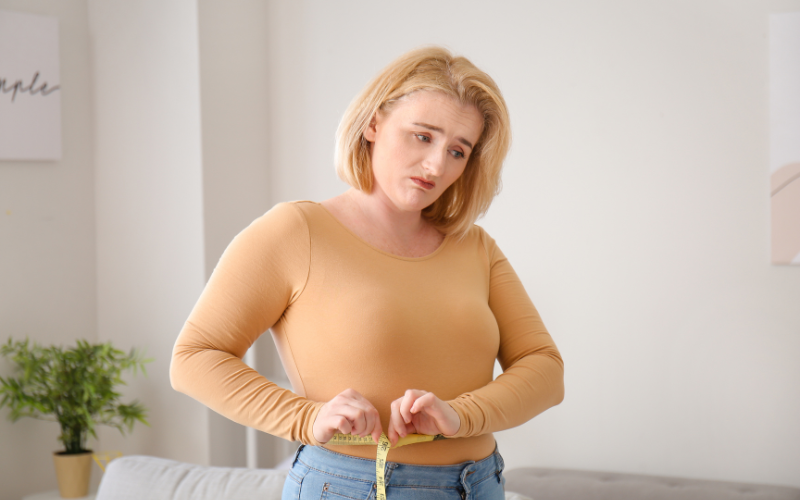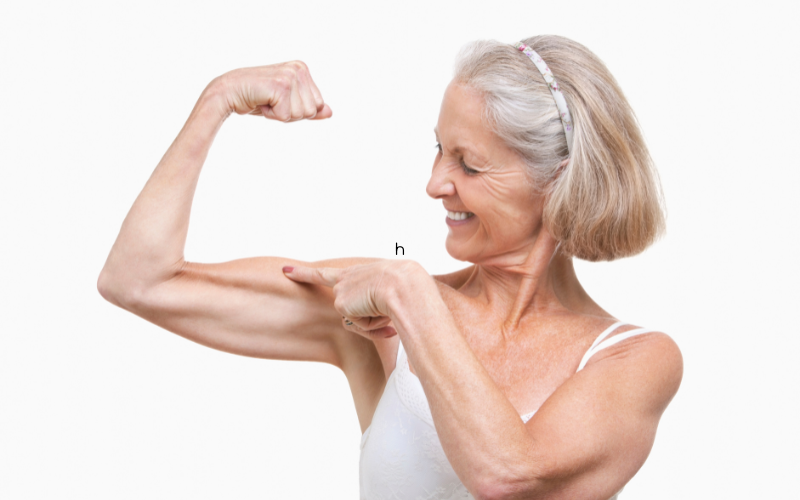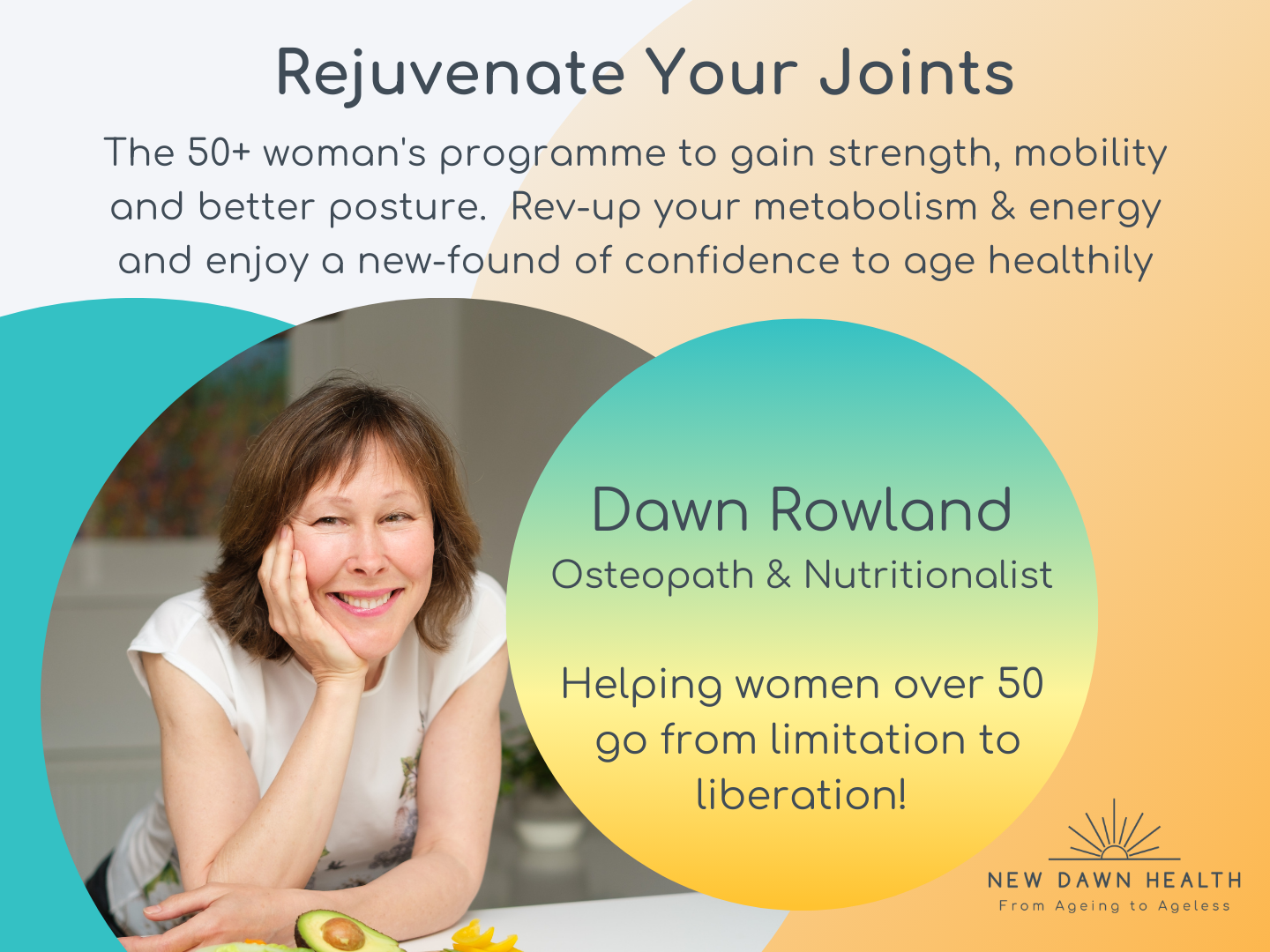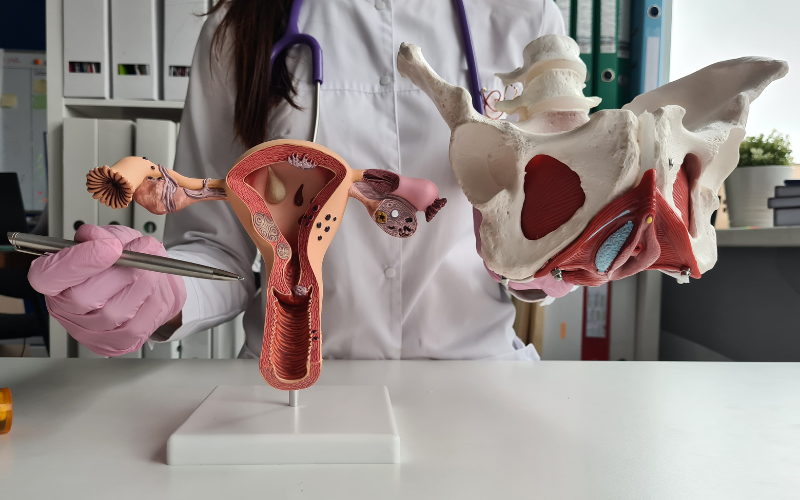Introduction
In this blog post, we’ll explore common post menopause symptoms age 60, such as weight gain, loss of muscle mass, urinary tract infections and loss of pelvic floor integrity.
As women transition into their postmenopausal years, it’s important to understand how the female body changes to avoid these problems and how best to stay strong, fit and healthy.
Understanding post menopause symptoms age 60
Post menopause refers to the years following the last menstrual period. While the average age for menopause is 51, frustratingly, post menopause symptoms can continue well into your sixties.
They can include:
- Hot flashes, night sweats and mood swings
- Vaginal dryness, loss Iibido, urinary tract infections
- Weight gain, muscle loss, bone demineralisation
- Joint aches and pains
- Sleep disturbances and loss of energy
- Thinning hair, looser skin, cracked or brittle nails
- Post menopause fatigue and tiredness
In time, as hormone levels even out and a woman’s body gets used to the changes, symptoms like hot flashes, night sweats, vaginal dryness, loss of libibo and mood swings gradually decrease in frequency.
However, other symptoms can increase over time and are not necessarily related to declining oestrogen levels, but more related to changes in other hormones, our metabolism, diet and reduced activity.
Other hormone changes:
Frustratingly, changes in other hormones like insulin, thyroxine and cortisol commonly affect women’s metabolism, weight gain and energy. As a consequence women can feel more tired, less motivated, lose muscle mass and gain abdominal fat mass. Moreover, abdominal fat also infers a higher proportion of fat deposited around the internal organs. This is pro-inflammatory and over time poses significant risks to health.
The natural solution:
Thankfully, coupling a whole foods diet with regular exercise not only minimises these symptoms but also lowers women’s risk form degenerative disease like diabetes, cardiovascular disease and Alzheimers.

Prevent postmenopausal weight gain with these effective strategies.
Managing post menopausal symptoms age 60
While these post menopausal symptoms age 60 may sound daunting, there are several ways you can naturally manage and prevent them.
preventing weight gain
- Prioritise protein: A fist or palm sized portion at every meal, especially breakfast. Protein is digested slowly, compared to carbohydrates, leaving you feeling fuller for longer and staving off cravings. Protein provides the all important building blocks for maintaining muscle mass and bone density. Include both animal protein and plant proteins in your diet.
- Enjoy healthy fat: Avoid refined palm oil, sunflower oil, vegetable oil and oils used in deep fried, baked and processed foods. Instead enjoy a portion of healthy fat at each meal, such as olives, olive oil, nuts & seeds, avocado and oily fish.
- Eat a rainbow: Aim to eat 30+ different colour plant foods each week. These include all vegetables, low-sugar fruit such as berries, lentils, legumes and beans, herbs and spices. The deeper and more varied the colours, the better because of their anti-inflammatory action. These foods provide energy and nutrients for the thyroid which makes the hormone thyroxine – that keeps the metabolism working optimally. Colourful fruits and vegetables provide plenty of healthy carbohydrates, rather than less nutritious bread, pasta and rice.
- Exercise early: Wake up and exercise first thing. Muscle is a highly metabolic tissue, meaning it burns calories even when it’s at rest. So, building more muscle mass means that more calories are burnt, and less calories are stored. Exercise at the beginning of the day helps mood and motivation. Variety is the key – mix up slow steady cardiovascular exercise with shorter more intense exercise; stretch to maintain flexibility and practice balance exercises alongside resistance training and weights.
- Stress management: Create a daily habit of mindfulness, or other relaxation to reduce the build up of stress. Stress hormones slow repair processes; upset the balance of gut microorganisms; compromises memory, mood and cognitive function; increases the frequency of hot flushes and disrupts sleep.
Make resistance training a part of your everyday exercise routine
keeping muscle mass and strength
Aim to be active every day. The NHS recommends at least 150 minutes of moderate intensity activity a week or 75 minutes of vigorous intensity activity if you are already active, or a combination of both.
Remember that any activity that strengthens muscles and loads the joints will help improve bone density. When muscle contracts, not only does it stimulate more muscle cells to be made, it also stimulates the bone cells to grow and repair.
- Hand-held weights: Start with light hand weights and gradually increase the weights over time. When you can do 10-12 comfortably, then increase the weight a little. Focusing on all major muscle groups, such as biceps curls, tricep extensions, overhead press, lateral raises, squats, backward lunges. Do the movements slowly and controlled, to build greater strength – it’s called “time under tension”.
- Resistance bands: Are an effective way to build strength. Here are some examples of resistance band exercises.
- Body weight exercises: Build strength too. Exercises like plank, wall sit, downward dog. Download my free guide “From Floppy to Firm”.
- General exercise – cycling, brisk walking, swimming, dance, gardening and cleaning are all valuable forms of exercises.
- Seek professional help: Consider working with a certified personal trainer or rehabilitation professional (physiotherapist or osteopath) who can create a customised workout plan and provide guidance on form and technique, especially if you have pre-existing pain.
If you have menopause related joint pains, you may like to read my blog on “Menopause joint pain – 8 management strategies”, and what you can do to help yourself.
I have also created a 4-week functional medicine based programme, specifically to address menopause aches and pains. Just click on the picture below to find out more.
maintaining good genito-urinary health
Vaginal tissues lose elasticity, and become thinner and dryer postmenopause. The urethra also becomes dry and can become irritated, which may increase the risk of infection. Some women may need to urinate more often and may experience leakage, also known as urinary incontinence.
The muscles of the pelvic floor naturally weaken, increasing the risk of vaginal prolapse. About one-third of post menopausal women age 60 will experience some degree of prolapse during their lifetime.
prevent urinary tract infections
You can help prevent UTIs by doing the following:
- Urinate after intercourse..
- Drink 1.5-2 litres of water a day.
- Take showers instead of baths.
- Don’t douce, use sprays, or powders in the genital area.
- Always wipe front to back after a bowel movement
- Use cranberry supplements or unsweetened cranberry juice
- Support your vaginal microbiome with specialist probiotics
- Use vaginal moisturisers and lubricants for intercourse
- Eat fermented foods regularly and avoid sugary foods
Look after your pelvic floor to maintain good genito-urinary health
Improve pelvic floor strength and prevent prolapse
Preventing pelvic floor weakness and prolapse involves:
1. Kegel Exercises: Regularly perform pelvic floor exercises (Kegels) to strengthen the muscles supporting your pelvic organs.
2. Proper Lifting Technique: Lift heavy objects using your legs, not your back, and avoid straining during bowel movements.
3. Maintain a Healthy Weight: Maintain a healthy body weight to reduce excess pressure on the pelvic floor.
4. Stay Hydrated: Drink enough water to prevent constipation, which can strain the pelvic floor. 1-2 litres each day.
5. Avoid Chronic Coughing: Manage conditions like chronic coughing to reduce strain on the pelvic area.
6. Regular Exercise: Engage in regular physical activity to maintain overall health and support muscle tone.
7. Posture Awareness: Pay attention to your posture and avoid prolonged periods of sitting or standing in one position.
8. Pelvic Floor Education: Learn about pelvic floor health and consult a healthcare professional for guidance on prevention and treatment if needed.
Try these Pelvic floor exercises.
Conclusion
Menopause is a natural part of ageing that every woman will experience in her lifetime. While it brings about significant changes in the body and mind, these changes do not have to define your life post menopause. With understanding, preventative management strategies in place, and the right support system around you – yes – you will feel normal again after menopause – perhaps even better than before!
Remember that every woman’s journey through menopause is unique. Don’t hesitate to seek professional help if you’re struggling with postmenopausal symptoms. There are numerous resources available to help you navigate this new stage of life with confidence and grace.




